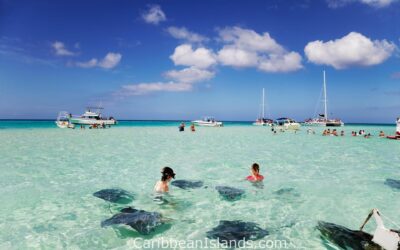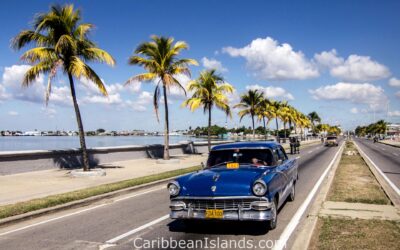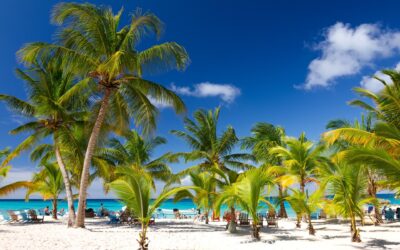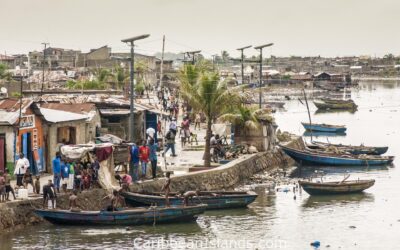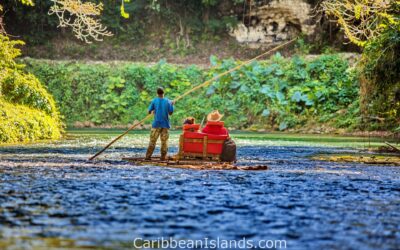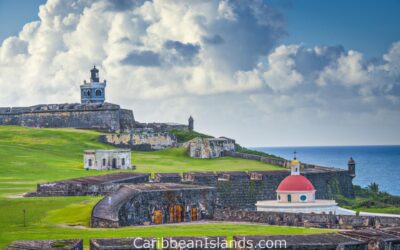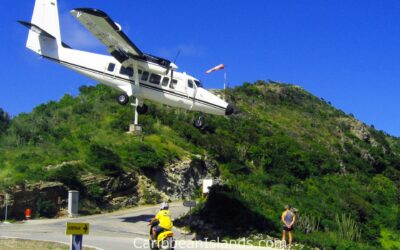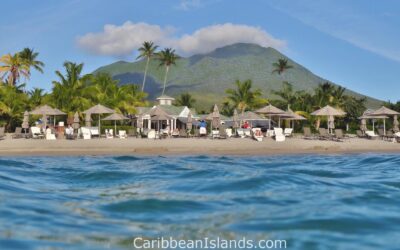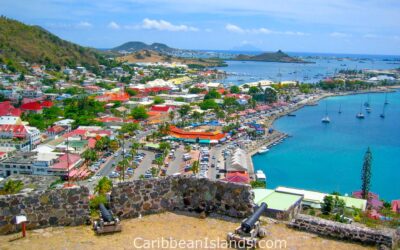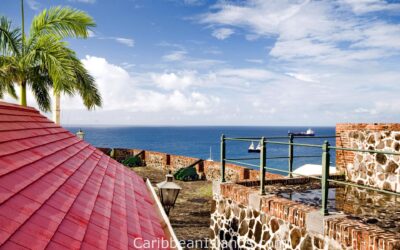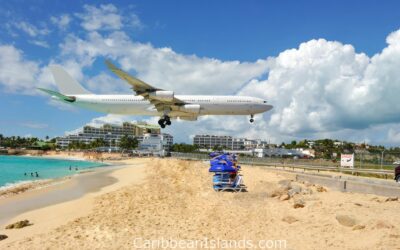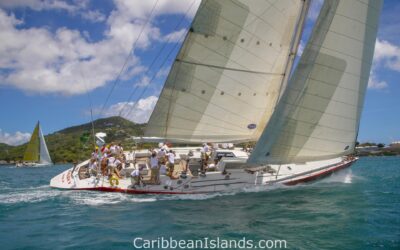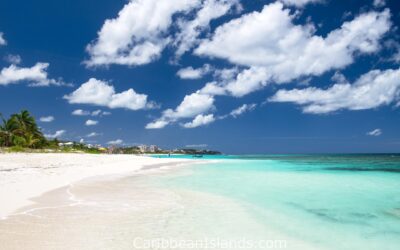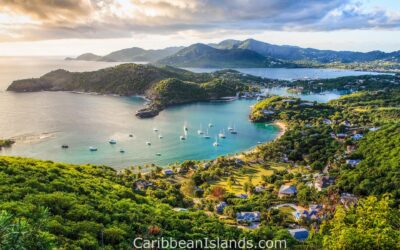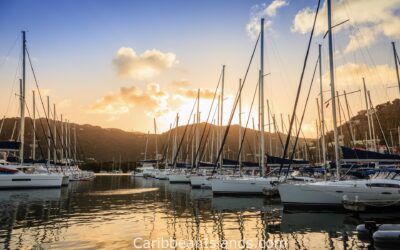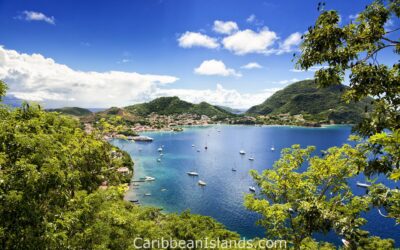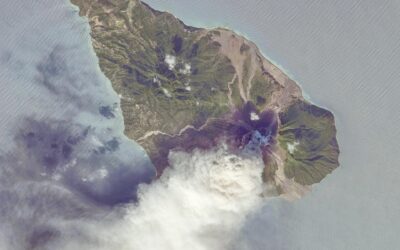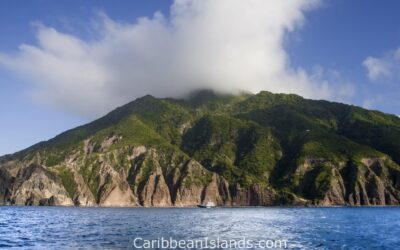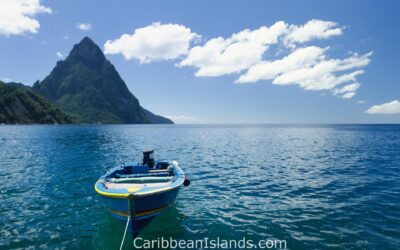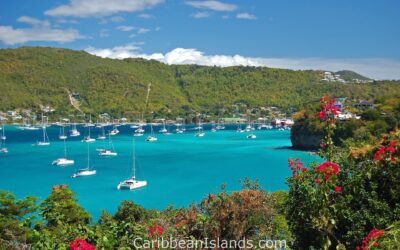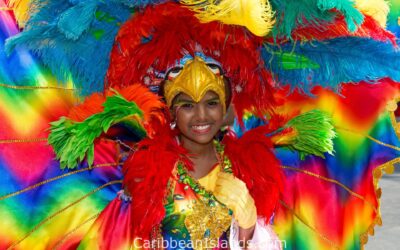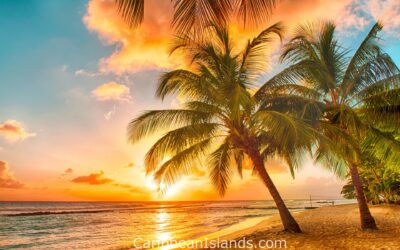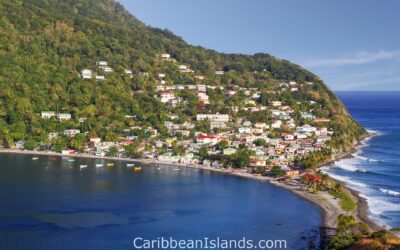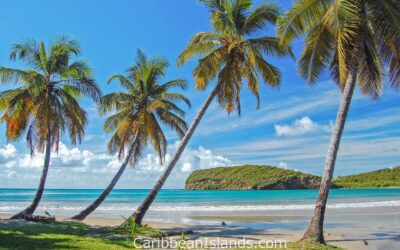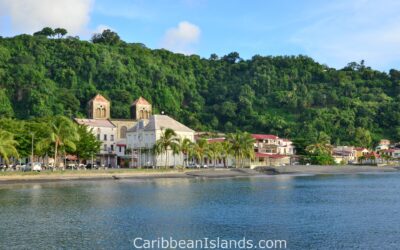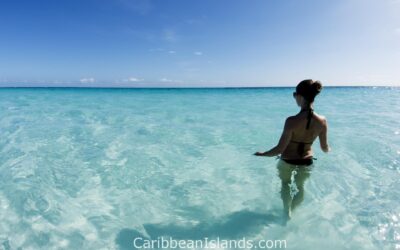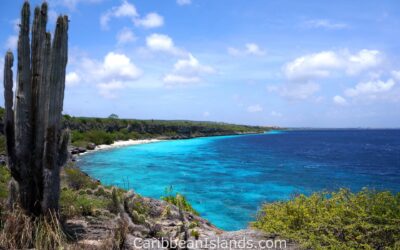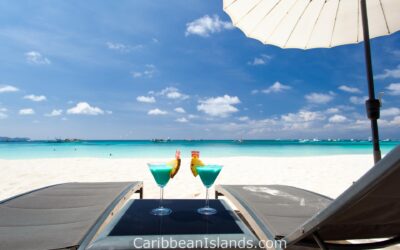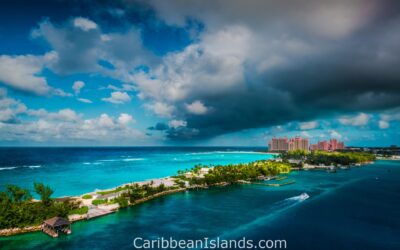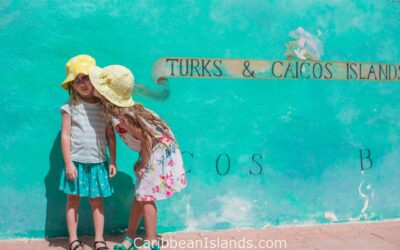The Caribbean Islands
The Caribbean Islands is a massive archipelago located in the Caribbean Sea, that can be subdivided into a few different regions: the Lucayan Archipelago, the Greater Antilles, the Lesser Antilles and the ABC Islands. There are 13 sovereign states and 17 dependent territories in the Caribbean, and the predominant languages are English, Spanish, French, Dutch and Antillean creole. The Caribbean sprawls across more than 1.06 million square miles and is primarily located between North America and South America.
Greater Antilles
The most-visited region in the Caribbean
Cayman Islands
British Overseas Territory
Cuba
Havana, capital city of Cuba
Dominican Republic
Santo Domingo, capital city of Dominican Republic
Haiti
Port-au-Prince, capital city of Haiti
Jamaica
Kingston, capital city of Jamaica
Puerto Rico
San Juan, capital city of Puerto Rico
The Lesser Antilles
form the border between the Caribbean Sea and the North Atlantic, made up of the Leeward, the Windward & the ABC islands
The majority of the islands in the Lesser Antilles form the border between the Caribbean Sea and the North Atlantic. They are located in the northern part of the West Indies. The islands here are further divided into the three regions: the Leeward Islands, the Windward Islands, the ABC Islands
Leeward Islands
the northern islands of the Lesser Antilles chain
Saint Barthélemy
Overseas collectivity of France
Saint Kitts and Nevis
Basseterre, capital city of St. Kitts & Nevis
Saint Martin
French side, north of island
Sint Eustatius
Municipality in the Dutch Caribbean
Sint Maarten
southern Dutch side of Saint Martin island
US Virgin Islands
US insular area
Anguilla
The Valley, capital city of Anguilla
Antigua and Barbuda
Island in Antigua and Barbuda
British Virgin Islands
British Overseas Territory
Guadeloupe
Basse-Terre, capital city of Guadeloupe
Montserrat
British Overseas Territory
Saba
The Bottom, capital city of Saba
Windward Islands
South Caribbean
Saint Lucia
Castries, capital ciy of St. Lucia
Saint Vincent & the Grenadines
Kingstown, capital city of Saint Vincent & the Grenadines
Trinidade and Tobago
Port of Spain, capital city of Trinidad & Tobago
Barbados
Bridgetown, capital city of Barbados
Dominica
Roseau, capital city of Dominica
Grenada
St. George’s, capital city of Grenada
Martinique
Fort-de-France, capital city of Martinique
ABC Islands
the three western-most islands of the Leeward Antilles in the Caribbean Sea
LUCAYAN ARCHIPELAGO
Its proximity to the U.S. makes it a very popular vacation destination
The Bahamas
British Overseas Territory
Turks and Caicos
British Overseas Territory
Where in the world are the Caribbean Islands?
Map with situation of the Caribbean in the World
The Caribbean islands are located in the region of the Caribbean Sea. The Caribbean Sea region is located southeast of the Gulf of Mexico and the North American mainland, east of Central America, north of South America and West of the Atlantic Ocean. The Bahamas and Turks and Caicos Islands, considered as the Lucayan Archipelago and do not border the Caribbean Sea, they are technically part of the West Indies but not the Caribbean. The mainland countries of Belize, Guyana, Suriname and French Guiana are often included as Caribbean Islands due to their political and cultural ties with the region.
Countries of the Caribbean
The Caribbean islands are made of 25 independent countries and other territories
- Anguilla (Anguilla is a British overseas territory since 1980)
- Antigua and Barbuda
- Aruba (Aruba is a constituent country of the Kingdom of the Netherlands)
- Bahamas
- Barbados
- British Virgin Islands (BVI is a British overseas territory )
- Tortola
- Virgin Gorda
- Anegada
- Jost Van Dyke
- Caribbean Netherlands also known as the BES islands are the three special municipalities of the Netherlands that are located in the Caribbean Sea. Consist of the islands of
- Bonaire
- Sint Eustatius
- Saba
- Cayman Islands (Cayman Islands is a British Overseas Territory since 1962)
- Cuba
- Curaçao (Curaçao is a constituent country of the Kingdom of the Netherlands)
- Dominica
- Dominican Republic
- Grenada
- Guadeloupe (France overseas territory since 1946)
- Haiti
- Jamaica
- Martinique (France overseas territory since 1946)
- Montserrat (Montserrat is a British Overseas Territory established since 1632)
- Puerto Rico (Puerto Rico is a territory of the United States since 1898)
- Saint Barthélemy (Saint Barthélemy is an overseas collectivity of France since 2007, having been previously a french colony since 1648, exchanged with Sweden in 1784 and sold back to France in 1878)
- Saint Kitts and Nevis
- Saint Lucia
- Saint Martin (France overseas territory)
- Saint Vincent and the Grenadines
- Sint Maarten (Sint Maarten is a constituent country of the Kingdom of the Netherlands)
- Trinidad and Tobago
- Turks and Caicos Islands (TCI are a British Overseas Territory)
- United States Virgin Islands USVI is a territory of the United States. Consist of the main islands of
- Saint Croix
- Saint John
- Saint Thomas
What are the capitals of the caribbean islands?
- Basseterre is the capital city of Saint Kitts and Nevis
- Basse-Terre is the capital city of Guadeloupe
- Brades is the capital city of Montserrat
- Bridgetown is the capital city of Barbados
- Castries is the capital city of Saint Lucia
- Charlotte Amalie is the capital city of United States Virgin Islands
- Cockburn Town is the capital city of Turks and Caicos Islands
- Fort de France is the capital city of Martinique
- George Town is the capital city of Cayman Islands
- Gustavia is the capital city of Saint Barthèlemy
- Havana is the capital city of Cuba
- Kingston is the capital city of Jamaica
- Kingstown is the capital city of Saint Vincent & The Grenadines
- Kralendijk is the capital city of Bonaire
- Marigot is the capital city of Saint Martin
- Nassau is the capital city of The Bahamas
- Oranjestad is the capital city of Aruba
- Philipsburg is the capital city of Saint Maarten
- Port au Prince is the capital city of Haiti
- Port of Spain is the capital city of Trinidad and Tobago
- Road Town is the capital city of Tortola, British Virgin Islands
- Roseau is the capital city of Dominica
- Saint George’s is the capital city of Grenada
- Saint John s is the capital city of Antigua & Barbuda
- San Juan is the capital city of Puerto Rico
- Santo Domingo is the capital city of Dominican Republic
- The Valley is the capital city of Anguilla
- Willemstad is the capital city of Curaçao
Why the Caribbean?
For many travelers, the Caribbean represents the ultimate escape. Over 7,000 islands await exploration, surrounded by turquoise waters and home to pristine white beaches. On land, visitors can hike through vivid emerald wilderness, spot sunshine-yellow parrots and glimpse fiery-red orchids, and fish of every color dart through corals in shades of purple and orange under the crystal-clear waters. Bold and colorful in every sense of the word, the Caribbean beckons with its splendid scenery, delectable foods, friendly people and boundless opportunities for exploration, adventure and relaxation.
Due to the close proximity of many Caribbean islands to their neighbors, many travelers today “island hop” around the region, going from shore to shore to experience a variety of scenery and culture in one trip. The first “island hoppers” were actually the Arawaks, Amerindians who ventured west and north throughout the region, from Cuba to the Bahamas. Little else is known about the Arawaks, who lacked a written language, but one Arawak invention can be seen on the beaches of the Caribbean to this day – the hammock.
Caribbean history
Life in the region changed forever when, in October, 1492, Christopher Columbus landed on the shores of the Bahamas. He also island-hopped and developed the first European settlement on the island that today is split between Haiti and the Dominican Republic. Columbus and his fellow conquistadores recognized the riches in the region and saw money when they gazed upon the bountiful seas and fertile land. They exploited both the natural resources and the native populations, claiming lands as their own and enslaving the people of Cuba, Puerto Rico, Jamaica, the Dominican Republic and other islands.
The English followed suit in the 17th century, claiming St. Kitts, Barbados, Antigua and other lands, and the French soon followed, claiming Guadeloupe and Martinique. The Dutch also wanted a piece of the Caribbean, settling St. Martin, Saba and Sint Eustatius. For the next two centuries, the Europeans battled for control of the islands, and possession frequently changed hands.
The colonial infighting between European powers created an opportunity for locals to fight for their own independence. Haiti led the way, declaring independence from its colonizer in 1804, and Cuba and the Dominican Republic followed, along with other smaller islands in the region. Some islands, such as Puerto Rico and Guadeloupe, still maintain strong neocolonial relationships with their parent nations.
Caribbean culture
Modern Caribbean culture has been heavily influenced by the culture and traditions of Europe, along with hints of African culture and others that have come to the islands through immigrant populations. These various waves of migration have formed a truly unique blend of cuisines, music, art, customs and traditions in the region.
One of the most recognizable aspects of Caribbean culture is the region’s music. Although they have roots in both European and African culture, the sounds of reggae, meringue, calypso, rumba and zouk music are distinctly Caribbean. Although the Caribbean islands share aspects of a common culture, each nation offers something unique and distinct to visitors. For stunning scenery and luxury resorts, they head to the Cayman Islands. St. Kitts and Nevis attract with their seclusion and lively music festivals, the unique flair of Barbados combines horse races by day and calypso dancing at night, and the US Virgin Islands draw visitors with their plantation tours and unspoiled beaches.
Caribbean lifestyle
Nature enthusiasts can explore the botanical gardens underwater limestone caves and offshore reefs of the Bahamas, then gamble at twinkling casinos and delve into pirate lore without ever leaving the islands. In St. Lucia, they can unwind on an isolated beach, then indulge their adrenaline by zip-lining through a rainforest or climbing the Pitons. These are just some of the many unique experiences visitors can have while exploring the islands.
Caribbean climate
The sun always shines on the region, and many travelers are attracted to the balmy tropical climate when winter strikes their home countries. The temperatures do not vary much throughout the year, with average temps of between 75 and 85 degrees Fahrenheit regardless of season. Trade winds make days and nights relatively comfortable, but humidity can be high year-round. The rainy season arrives in autumn, and hurricane season spans June through November, but satellite forecasts now give plenty of warning so that precautions can be taken during a storm. Truly a year-round destination, there really is never a bad time to visit the Caribbean.
The pleasant weather is one of the reasons that tourism has become a key industry for the Caribbean economy. Millions of people come to the islands every year, but other major industries include textile, clothing and electronics manufacturing and oil refining and production.
Caribbean, one of the world’s premier travel destinations
Still, most Caribbean economies are largely dependent on tourist dollars. Luckily, there are no signs of the industry slowing. People all over the world dream of spending their days in the shade of palm trees on a sandy beaches, sipping tropical concoctions and feasting on the freshest seafood, dancing to the sweet rhythms of steel-drum bands at night and getting away from it all in an island paradise. The Caribbean offers all this and more, making it one of the world’s premier travel destinations for anyone looking for a true tropical escape.
